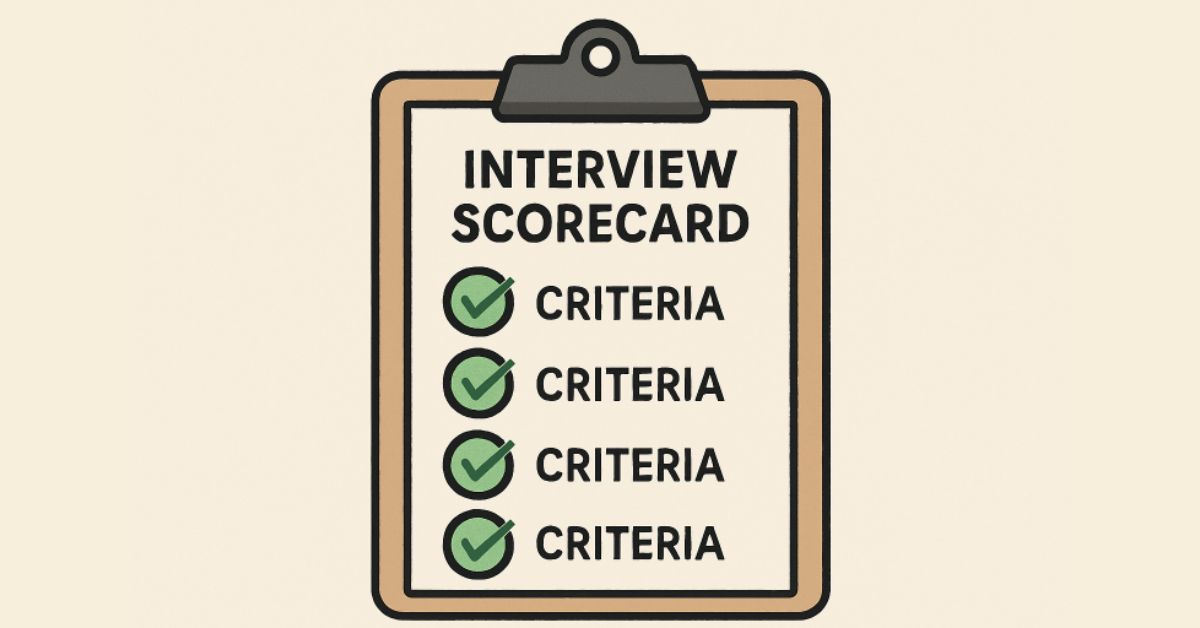The Future of Hiring: Why Interview Scorecards Matter

Introduction
Organizations face mounting pressure to refine their hiring processes and secure top talent in an increasingly competitive job market. Among the most impactful solutions emerging today is the use of interview scorecards. These tools fundamentally change how companies assess candidates by introducing a measurable, repeatable model that can be easily adopted across teams. Early adopters have found that leveraging a screening score card boosts consistency and fairness throughout the interview process by keeping every evaluation tied to the same objective standards.
Scorecards provide a structured framework for candidate assessment, aligning evaluation criteria with job requirements, allowing employers to focus on essential skills and competencies. This methodical approach supports legal guidelines and diversity initiatives, while providing easier documentation for future reference. Interview scorecards empower hiring panels to move beyond subjective judgment, reducing variance and bias in candidate evaluation. This shift towards evidence-based decision making speeds up the hiring process and leads to more successful long-term hires. The structured feedback collected through scorecards streamlines communication among hiring managers and HR, allowing for more precise comparisons and more justified hiring decisions. As talent competition grows, interview scorecards are crucial in building high-performing, diverse teams.
Understanding Interview Scorecards
An interview scorecard is a standardized tool designed to guide hiring teams as they evaluate job candidates during interviews. It breaks down the core areas—competencies, experience, problem-solving skills, and cultural fit—that are essential for success in a given role. By aligning each interview question with a competency and utilizing a consistent numerical rating scale, scorecards bring structure and transparency to what was once a subjective process.
This systematic approach provides documentation and ensures every candidate—regardless of resume or background—is measured against the exact expectations set. As leading voices in recruitment have noted, this transparency can be compelling in helping teams identify where their interview evaluations may need adjustment to eliminate ingrained biases.
Benefits of Using Interview Scorecards
1. Consistency in Evaluations
Scorecards remove ambiguity from the hiring process by ensuring that every candidate is evaluated using the same competency definitions and rating criteria. This promotes fairness, accountability, and transparency, allowing organizations to meet legal standards and internal diversity and inclusion goals.
2. Reduction of Bias
When interviews rely on undefined measures or gut feelings, unconscious bias can easily creep in. Scorecards counteract this by shifting the focus to evidence and data, making it harder for irrelevant factors—such as personal background or appearance—to influence decisions. Consistently applied, scorecards are a proven tool for leveling the playing field and creating a more equitable hiring process.
3. Data-Driven Decision Making
Scorecards generate quantitative data by capturing how each candidate performed against each requirement. This information gives leaders actionable insights and allows for statistically informed hiring outcomes, from initial screening through final selection. The trend toward analytics-driven recruitment is only expected to grow as more companies invest in HR technology.
Implementing Interview Scorecards
Building an effective scorecard system requires thoughtful planning and periodic updates. The steps below outline best practices for organizations looking to maximize the impact of scorecard-driven hiring:
- Define Key Competencies: Determine the skill sets, experiences, and attributes most critical for success in the role. These may include technical know-how, problem-solving skills, communication abilities, and cultural alignment.
- Develop a Rating Scale: Establish a uniform system to assess each competency, such as a clear 1-to-5 scoring model, where each level has defined behavioral anchors.
- Design Behavior-Based Questions: Formulate questions tailored to draw out evidence of each key competency. The most effective questions are open-ended and grounded in real-world scenarios.
- Score Each Response: Rate answers immediately using the predefined scale, supporting objectivity and minimizing recency bias.
- Document and Compare Scores: Attach brief explanatory notes with each rating to facilitate future assessment, ensure transparency, and support calibration across interviewers.
Challenges and Considerations
- Rigidity: While scorecards promote consistency, adhering too strictly may overlook unique characteristics or potential outside the predefined framework. Teams should be encouraged to note exceptional attributes that may fall outside the initial scope.
- Time-Consuming: The upfront investment to develop, calibrate, and maintain comprehensive scorecards can be substantial, particularly for organizations that fill diverse roles at scale.
- Subjectivity in Scoring: Different interviewers may interpret scales differently, even with structured criteria. Ongoing training and calibration sessions are vital to improving inter-rater reliability.
It’s essential to review and update scorecards regularly to keep pace with evolving role requirements, business goals, and current best practices in recruiting. Maintaining flexibility within the structured approach helps organizations capture a broader range of candidate potential.
Conclusion
Interview scorecards fundamentally reshape how organizations attract, evaluate, and hire talent. By promoting objective, consistent, and data-driven decision-making, scorecards foster fairer, more efficient recruitment practices and support companies in building diverse, high-performing teams. As hiring becomes increasingly complex, leveraging tools is essential to staying competitive in the evolving world of work.






